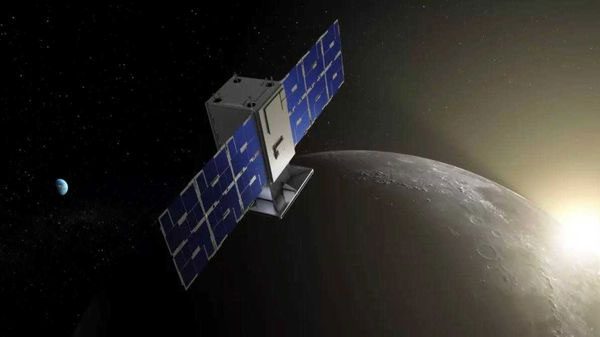The microwave-sized satellite CAPSTONE from NASA was launched on June 28 but will not reach lunar orbit until November 13.
The Photon spacecraft carrying CAPSTONE was launched aboard Rocket Lab’s two-stage Electron rocket. The flight departed from the eastern coast of the Māhia Peninsula in New Zealand at 4:55 PM on June 28 (Vietnam time). NASA’s 25 kg CAPSTONE satellite is headed directly to the Moon but will not arrive until November 13.

Illustrative image of NASA’s CAPSTONE satellite in a “near-rectilinear halo” (NRHO) orbit (Photo: NASA)
The Moon is only 384,500 km away from Earth. While NASA’s Apollo missions made the trip in just three days, why will CAPSTONE take more than four months to reach its destination?
According to NASA, the spacecraft in the Apollo missions were launched atop the massive Saturn V rocket, which is the most powerful rocket ever flown, although NASA’s Space Launch System (SLS) and SpaceX’s Starship may soon change that. In contrast, the CAPSTONE satellite, being the size of a microwave, was launched on the Electron rocket, which is designed to send small satellites into Earth orbit.
As a result, the mission team for CAPSTONE has been more innovative by selecting a fuel-efficient path to the Moon.
In the five days following launch, Photon will gradually increase its orbit through a series of its engines. On the sixth day, the satellite will perform its final engine burn to accelerate to 39,500 km/h, fast enough to escape Earth’s orbit and head towards the Moon. Within 20 minutes of that burn, Photon will deploy the CAPSTONE satellite.
Rocket Lab’s rocket video launching NASA’s satellite into orbit.
CAPSTONE will occasionally fire its own thrusters over the next few months and will ultimately enter a “near-rectilinear halo” (NRHO) around the Moon to test the stability of this orbit.
The engineers on this mission believe that NRHO has a high level of stability. Satellites and spacecraft will not need to burn much fuel in this orbit due to the balanced gravitational forces of the Moon and Earth. This is one of the main reasons NASA decided to choose this orbit for the Gateway space station, a crucial part of the agency’s Artemis Moon exploration program.
This Gateway will serve as a starting point for new explorations, both crewed and uncrewed, to the lunar surface. NASA aims to launch the core modules of this station by the end of 2024.
CAPSTONE is a type of probe that can autonomously navigate to maintain a stable orbit. This satellite will also conduct several communication tests between spacecraft, followed by integration with NASA’s Lunar Reconnaissance Orbiter (LRO), which has been orbiting for a long time. The satellite was originally scheduled for launch in May but was delayed multiple times for system checks and other technical tests.





















































